Ancient greek maritime trade evidence Stock Photos and Images
(5)See ancient greek maritime trade evidence stock video clipsAncient greek maritime trade evidence Stock Photos and Images
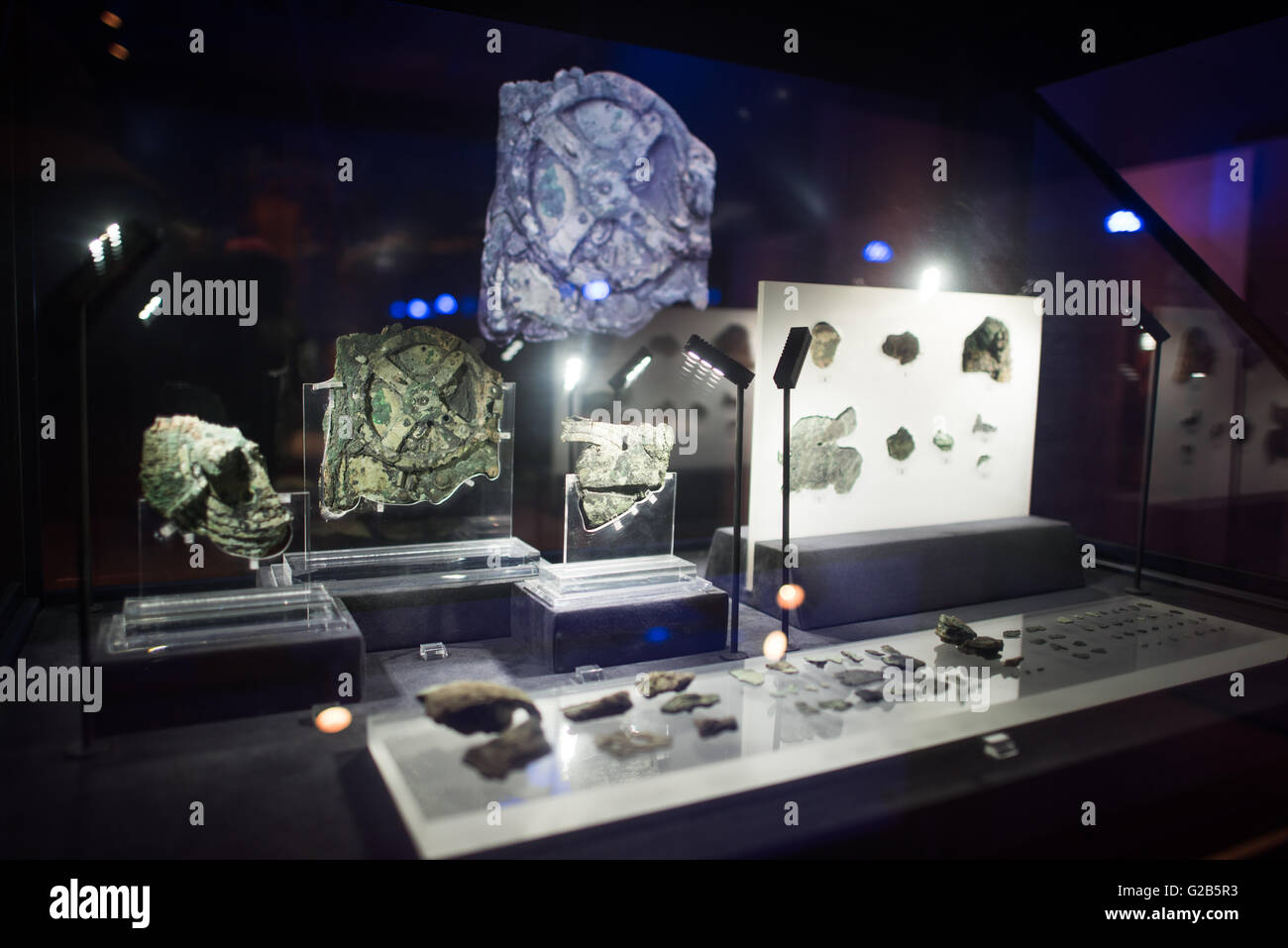 Antikythera Mechanism Fragments National Archaeological Museum Athens Greece // ATHENS, Greece — Original fragments of the Antikythera Mechanism on display at the National Archaeological Museum in Athens, Greece. The ancient Greek astronomical calculator, discovered in a shipwreck in 1900, dates to between 100 BC and 205 BC. The corroded bronze fragments represent the world's oldest known complex astronomical computing device. Stock Photohttps://www.alamy.com/image-license-details/?v=1https://www.alamy.com/stock-photo-antikythera-mechanism-fragments-national-archaeological-museum-athens-104737559.html
Antikythera Mechanism Fragments National Archaeological Museum Athens Greece // ATHENS, Greece — Original fragments of the Antikythera Mechanism on display at the National Archaeological Museum in Athens, Greece. The ancient Greek astronomical calculator, discovered in a shipwreck in 1900, dates to between 100 BC and 205 BC. The corroded bronze fragments represent the world's oldest known complex astronomical computing device. Stock Photohttps://www.alamy.com/image-license-details/?v=1https://www.alamy.com/stock-photo-antikythera-mechanism-fragments-national-archaeological-museum-athens-104737559.htmlRMG2B5R3–Antikythera Mechanism Fragments National Archaeological Museum Athens Greece // ATHENS, Greece — Original fragments of the Antikythera Mechanism on display at the National Archaeological Museum in Athens, Greece. The ancient Greek astronomical calculator, discovered in a shipwreck in 1900, dates to between 100 BC and 205 BC. The corroded bronze fragments represent the world's oldest known complex astronomical computing device.
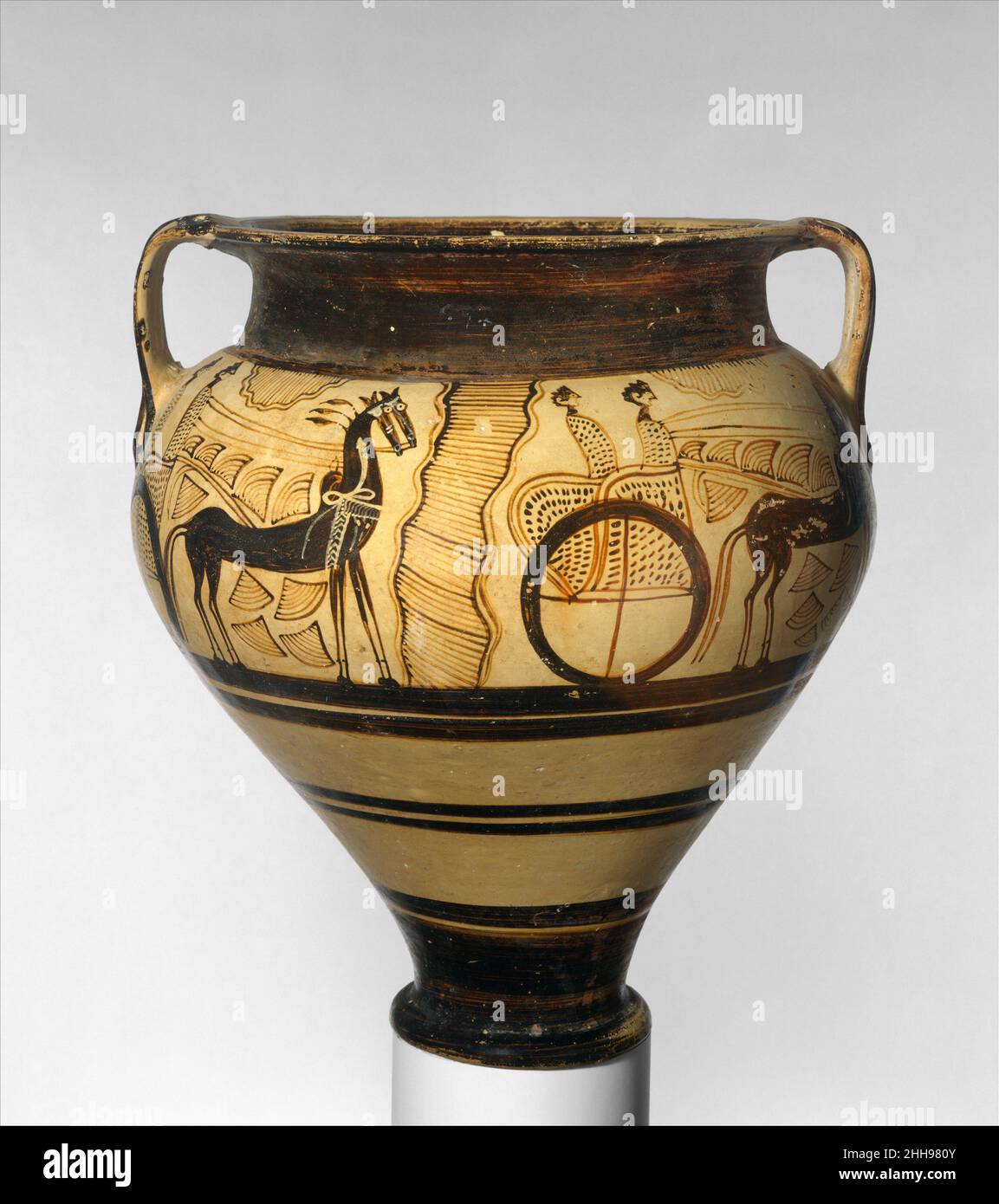 Terracotta chariot krater ca. 1375–1350 B.C. Helladic, Mycenaean During the fourteenth century B.C. broad and deep-bodied kraters, often decorated with complex pictorial scenes, were produced in Greece, particularly in the Argolid and in Cyprus. A great number of these works came to light on Cyprus, and they were often attributed to artists working in a Cypro-Mycenaean idiom. Evidence had increasingly indicated that trade between the Argolid and Cyprus was active and that the pictorial vases were a major commodity made on the mainland and traded eastward, probably for their contents as well as Stock Photohttps://www.alamy.com/image-license-details/?v=1https://www.alamy.com/terracotta-chariot-krater-ca-13751350-bc-helladic-mycenaean-during-the-fourteenth-century-bc-broad-and-deep-bodied-kraters-often-decorated-with-complex-pictorial-scenes-were-produced-in-greece-particularly-in-the-argolid-and-in-cyprus-a-great-number-of-these-works-came-to-light-on-cyprus-and-they-were-often-attributed-to-artists-working-in-a-cypro-mycenaean-idiom-evidence-had-increasingly-indicated-that-trade-between-the-argolid-and-cyprus-was-active-and-that-the-pictorial-vases-were-a-major-commodity-made-on-the-mainland-and-traded-eastward-probably-for-their-contents-as-well-as-image458122587.html
Terracotta chariot krater ca. 1375–1350 B.C. Helladic, Mycenaean During the fourteenth century B.C. broad and deep-bodied kraters, often decorated with complex pictorial scenes, were produced in Greece, particularly in the Argolid and in Cyprus. A great number of these works came to light on Cyprus, and they were often attributed to artists working in a Cypro-Mycenaean idiom. Evidence had increasingly indicated that trade between the Argolid and Cyprus was active and that the pictorial vases were a major commodity made on the mainland and traded eastward, probably for their contents as well as Stock Photohttps://www.alamy.com/image-license-details/?v=1https://www.alamy.com/terracotta-chariot-krater-ca-13751350-bc-helladic-mycenaean-during-the-fourteenth-century-bc-broad-and-deep-bodied-kraters-often-decorated-with-complex-pictorial-scenes-were-produced-in-greece-particularly-in-the-argolid-and-in-cyprus-a-great-number-of-these-works-came-to-light-on-cyprus-and-they-were-often-attributed-to-artists-working-in-a-cypro-mycenaean-idiom-evidence-had-increasingly-indicated-that-trade-between-the-argolid-and-cyprus-was-active-and-that-the-pictorial-vases-were-a-major-commodity-made-on-the-mainland-and-traded-eastward-probably-for-their-contents-as-well-as-image458122587.htmlRM2HH980Y–Terracotta chariot krater ca. 1375–1350 B.C. Helladic, Mycenaean During the fourteenth century B.C. broad and deep-bodied kraters, often decorated with complex pictorial scenes, were produced in Greece, particularly in the Argolid and in Cyprus. A great number of these works came to light on Cyprus, and they were often attributed to artists working in a Cypro-Mycenaean idiom. Evidence had increasingly indicated that trade between the Argolid and Cyprus was active and that the pictorial vases were a major commodity made on the mainland and traded eastward, probably for their contents as well as
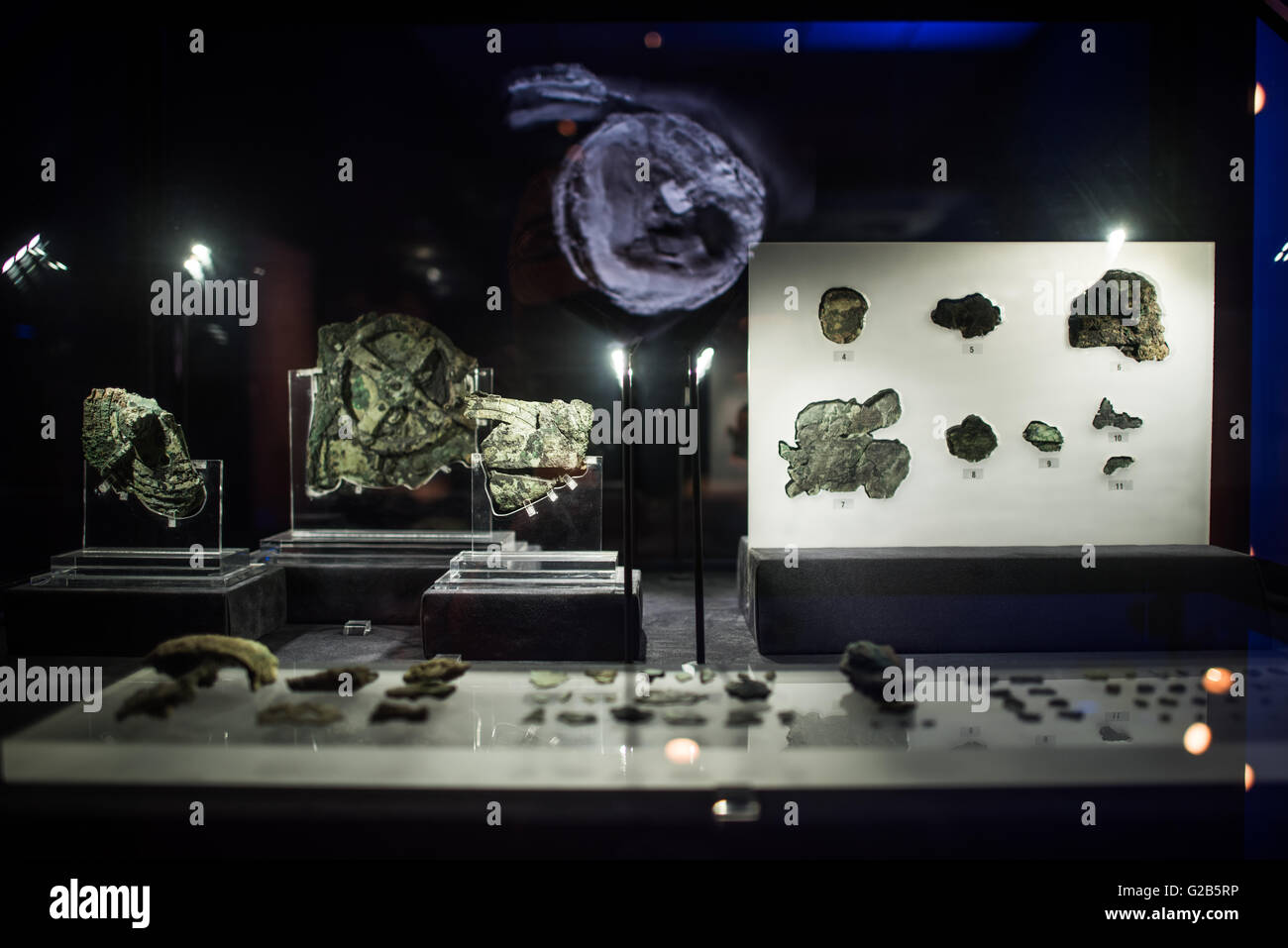 Antikythera Mechanism Fragments National Archaeological Museum Athens Greece // ATHENS, Greece — Original fragments of the Antikythera Mechanism on display at the National Archaeological Museum in Athens, Greece. The ancient Greek astronomical calculator, discovered in a shipwreck in 1900, dates to between 100 BC and 205 BC. The corroded bronze fragments represent the world's oldest known complex astronomical computing device. Stock Photohttps://www.alamy.com/image-license-details/?v=1https://www.alamy.com/stock-photo-antikythera-mechanism-fragments-national-archaeological-museum-athens-104737578.html
Antikythera Mechanism Fragments National Archaeological Museum Athens Greece // ATHENS, Greece — Original fragments of the Antikythera Mechanism on display at the National Archaeological Museum in Athens, Greece. The ancient Greek astronomical calculator, discovered in a shipwreck in 1900, dates to between 100 BC and 205 BC. The corroded bronze fragments represent the world's oldest known complex astronomical computing device. Stock Photohttps://www.alamy.com/image-license-details/?v=1https://www.alamy.com/stock-photo-antikythera-mechanism-fragments-national-archaeological-museum-athens-104737578.htmlRMG2B5RP–Antikythera Mechanism Fragments National Archaeological Museum Athens Greece // ATHENS, Greece — Original fragments of the Antikythera Mechanism on display at the National Archaeological Museum in Athens, Greece. The ancient Greek astronomical calculator, discovered in a shipwreck in 1900, dates to between 100 BC and 205 BC. The corroded bronze fragments represent the world's oldest known complex astronomical computing device.
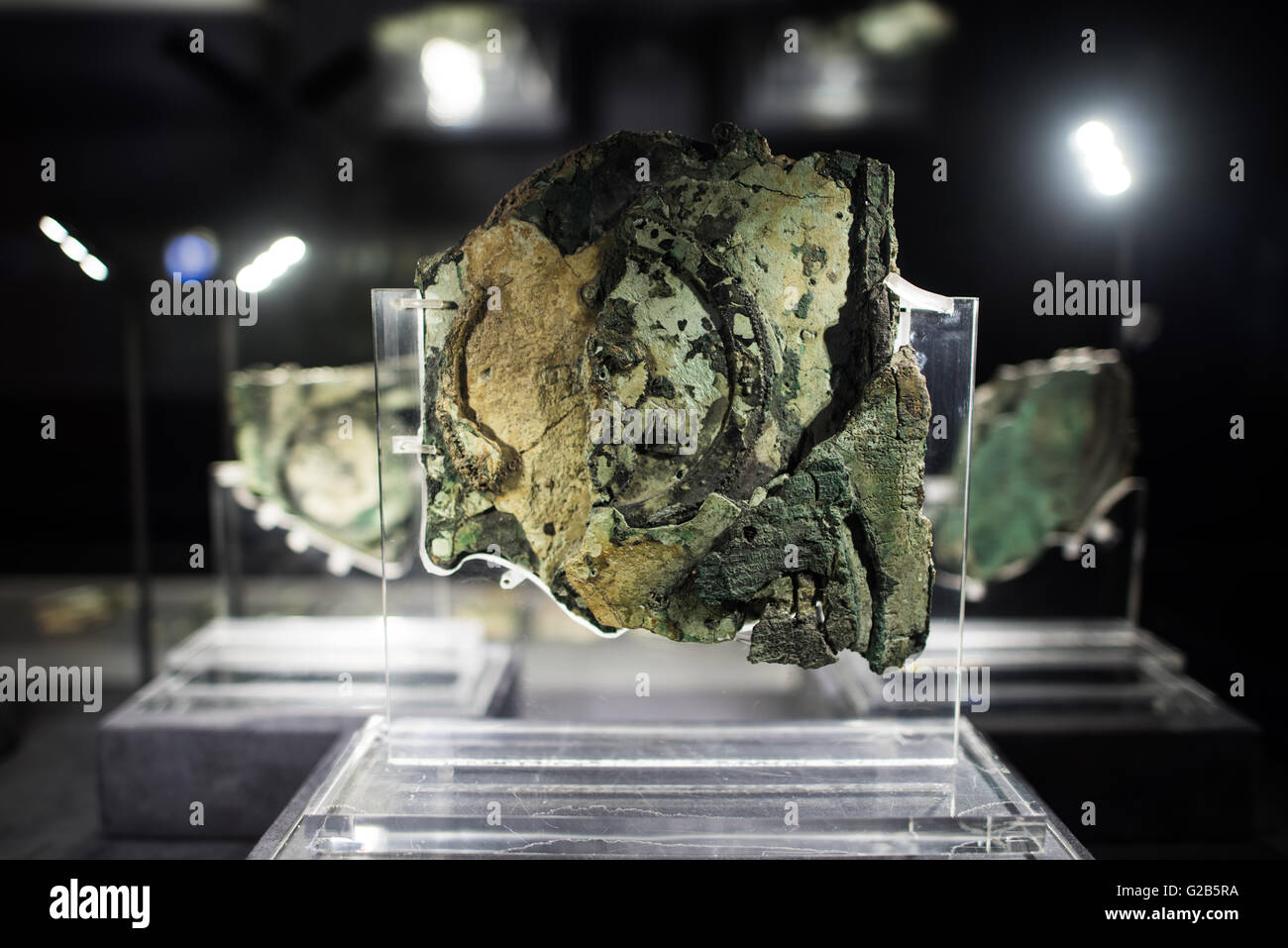 Antikythera Mechanism Fragments National Archaeological Museum Athens Greece // ATHENS, Greece — Original fragments of the Antikythera Mechanism on display at the National Archaeological Museum in Athens, Greece. The ancient Greek astronomical calculator, discovered in a shipwreck in 1900, dates to between 100 BC and 205 BC. The corroded bronze fragments represent the world's oldest known complex astronomical computing device. Stock Photohttps://www.alamy.com/image-license-details/?v=1https://www.alamy.com/stock-photo-antikythera-mechanism-fragments-national-archaeological-museum-athens-104737566.html
Antikythera Mechanism Fragments National Archaeological Museum Athens Greece // ATHENS, Greece — Original fragments of the Antikythera Mechanism on display at the National Archaeological Museum in Athens, Greece. The ancient Greek astronomical calculator, discovered in a shipwreck in 1900, dates to between 100 BC and 205 BC. The corroded bronze fragments represent the world's oldest known complex astronomical computing device. Stock Photohttps://www.alamy.com/image-license-details/?v=1https://www.alamy.com/stock-photo-antikythera-mechanism-fragments-national-archaeological-museum-athens-104737566.htmlRMG2B5RA–Antikythera Mechanism Fragments National Archaeological Museum Athens Greece // ATHENS, Greece — Original fragments of the Antikythera Mechanism on display at the National Archaeological Museum in Athens, Greece. The ancient Greek astronomical calculator, discovered in a shipwreck in 1900, dates to between 100 BC and 205 BC. The corroded bronze fragments represent the world's oldest known complex astronomical computing device.
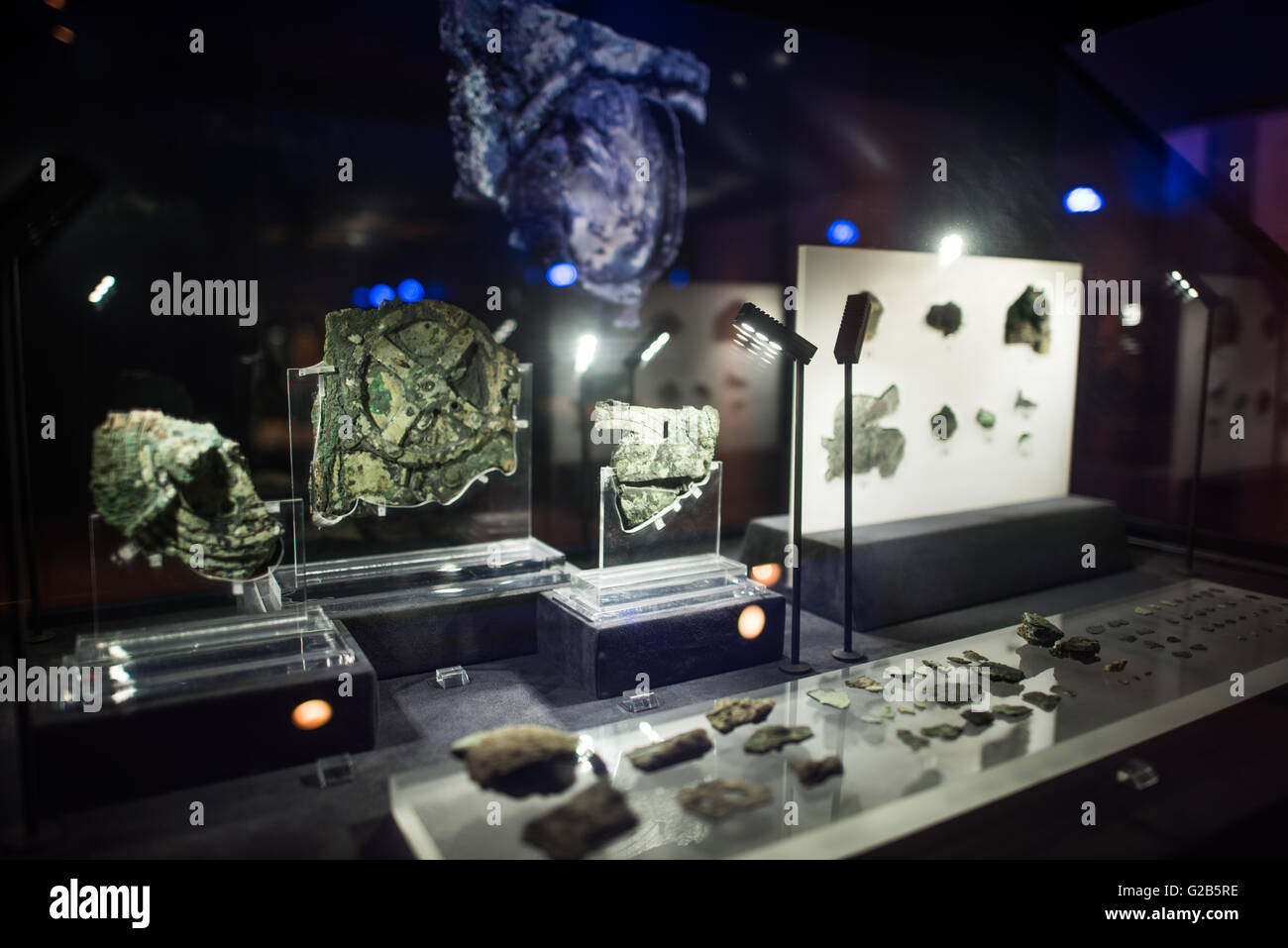 Antikythera Mechanism Fragments National Archaeological Museum Athens // ATHENS, Greece — Original fragments of the Antikythera Mechanism on display at the National Archaeological Museum in Athens, Greece. In the foreground are the 75 small fragments. The largest piece to the left in the back, with the circular gear clearly visible, is known as Fragment A and contains most of the Mechanism's gears. The ancient Greek astronomical calculator, discovered in a shipwreck in 1900, dates to between 100 BC and 205 BC. The corroded bronze fragments represent the world's oldest known complex astronomica Stock Photohttps://www.alamy.com/image-license-details/?v=1https://www.alamy.com/stock-photo-antikythera-mechanism-fragments-national-archaeological-museum-athens-104737570.html
Antikythera Mechanism Fragments National Archaeological Museum Athens // ATHENS, Greece — Original fragments of the Antikythera Mechanism on display at the National Archaeological Museum in Athens, Greece. In the foreground are the 75 small fragments. The largest piece to the left in the back, with the circular gear clearly visible, is known as Fragment A and contains most of the Mechanism's gears. The ancient Greek astronomical calculator, discovered in a shipwreck in 1900, dates to between 100 BC and 205 BC. The corroded bronze fragments represent the world's oldest known complex astronomica Stock Photohttps://www.alamy.com/image-license-details/?v=1https://www.alamy.com/stock-photo-antikythera-mechanism-fragments-national-archaeological-museum-athens-104737570.htmlRMG2B5RE–Antikythera Mechanism Fragments National Archaeological Museum Athens // ATHENS, Greece — Original fragments of the Antikythera Mechanism on display at the National Archaeological Museum in Athens, Greece. In the foreground are the 75 small fragments. The largest piece to the left in the back, with the circular gear clearly visible, is known as Fragment A and contains most of the Mechanism's gears. The ancient Greek astronomical calculator, discovered in a shipwreck in 1900, dates to between 100 BC and 205 BC. The corroded bronze fragments represent the world's oldest known complex astronomica